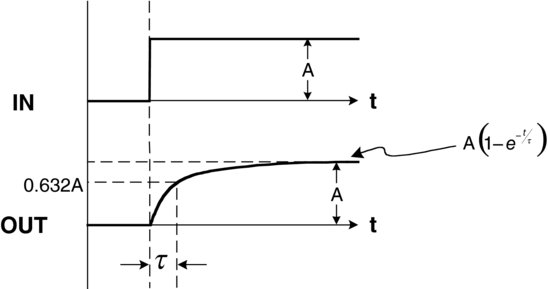2
Feedback Control Loop Concepts
What we have to learn to do, we learn by doing.
—Aristotle
Introduction
Prior to attempting this workshop, you should review Chapter 3 in the book.
Process systems respond to various disturbances (or stimuli) in many different ways. However, certain types of responses are characteristic of specific types of processes. The characteristic response of a process can be described as its personality. Process control engineers have developed a range of terms and concepts to describe different process personalities and they use this knowledge to develop effective control systems.
Two of the most common personalities are those for first- and second-order systems. First-order systems may also be called first-order processes or first-order lags and can be mathematically modelled through the use of a first-order differential equation. Shown in Figure 2.1 is the typical step response of a first-order process. The time constant, τ, was discussed in Chapter 3 and is related to the speed of the process response; the slower the process the larger the value of τ.
Figure 2.1 First-order process response to a step change.

Unlike first-order processes, second-order processes can have several different types of responses. Second-order processes are more complex than first order, and hence the mathematical models used to describe these processes are also more complex. ...
Get A Real-Time Approach to Process Control, 3rd Edition now with the O’Reilly learning platform.
O’Reilly members experience books, live events, courses curated by job role, and more from O’Reilly and nearly 200 top publishers.

